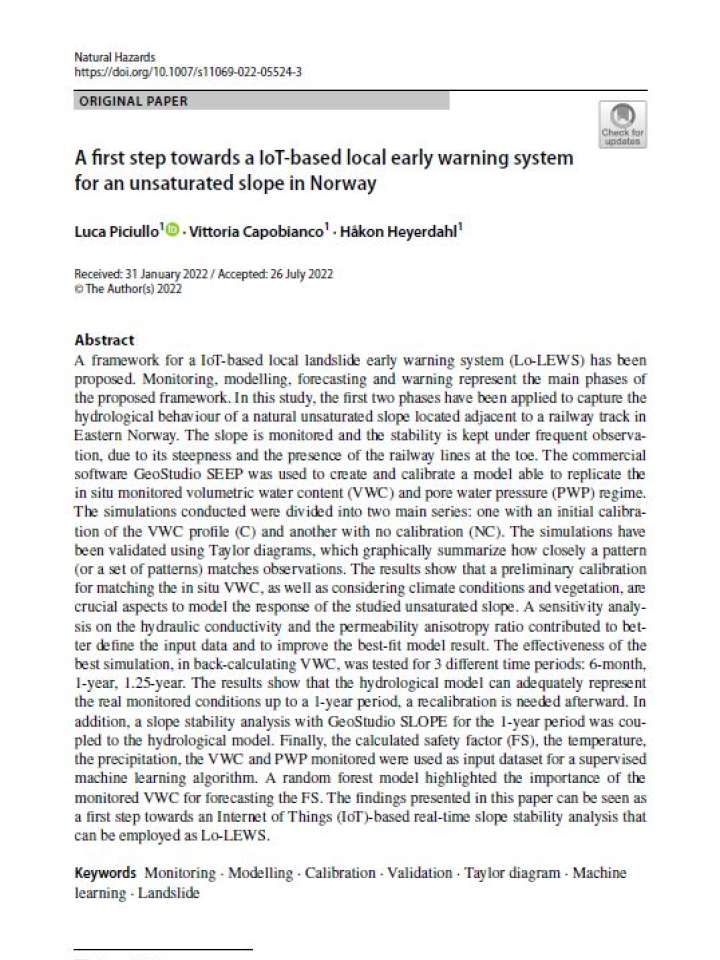A first step towards a IoT-based local early warning system for an unsaturated slope in Norway
This study proposes a framework for a IoT-based local landslide early warning system (Lo-LEWS). Monitoring, modelling, forecasting and warning represent the main phases of the proposed framework. In this study, the first two phases have been applied to capture the hydrological behaviour of a natural unsaturated slope located adjacent to a railway track in Eastern Norway. The findings presented in this paper can be seen as a first step towards an Internet of Things (IoT)-based real-time slope stability analysis that can be employed as Lo-LEWS.
The results show that a preliminary calibration for matching the in situ volumetric water content (VWC), as well as considering climate conditions and vegetation, are crucial aspects to model the response of the studied unsaturated slope. A sensitivity analysis on the hydraulic conductivity and the permeability anisotropy ratio contributed to better define the input data and to improve the best-fit model result. The effectiveness of the best simulation, in back-calculating VWC, was tested for 3 different time periods: 6-month, 1-year, 1.25-year. The results show that the hydrological model can adequately represent the real monitored conditions up to a 1-year period, a recalibration is needed afterward. In addition, a slope stability analysis with GeoStudio SLOPE for the 1-year period was coupled to the hydrological model. Finally, the calculated safety factor (FS), the temperature, the precipitation, the VWC and PWP monitored were used as input dataset for a supervised machine learning algorithm. A random forest model highlighted the importance of the monitored VWC for forecasting the FS.
Explore further
